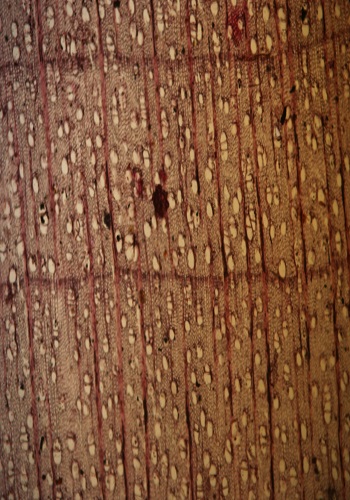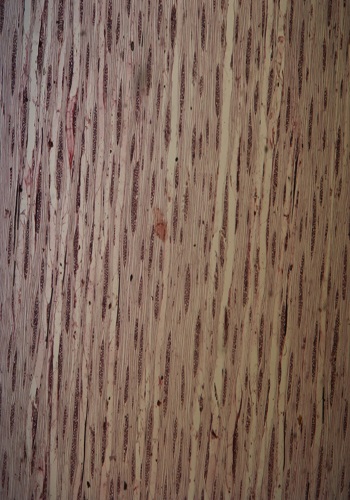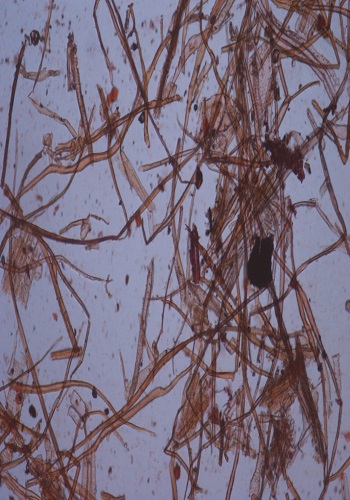This tree is native to Pakistan, India and Nepal. In Pakistan it is found in association with conifers at elevations between 2000 to 3500 m. Specific locations are Chitral, Dir, Swat, Hazara, Murree Hills, and Azad Kashmir.
The sapwood is indistinct from heartwood. The wood is creamy white to pinkish-white in color and is straight-grained, fine with even-texture.
The Maple wood has distinct growth rings, delimited by sharp, narrow lines of terminal parenchyma and tangentially flattened fibres, 5-8 per 2.5 cm. The vessels are very small, not visible with naked eyes and are open or occulated. The majority of vessels are solitary and in radial rows of 2-3, 60.60-159.09 per milimeter squaremm2, 235-485 µ long. The wood rays are scarcely visible with naked eyes and are fine and straight, 4-8 per mm , 66.19 µ (40 cells) µ in maximum width and more than 379.09 µ (50 cells) in maximum height. The parenchyma is terminal and para-tracheal. The wood fibers are non-libriform to libriform, medium fine, non-septate, short 0.38-0.88 mm long,10.90-30.40 µ in diameter and have 1.91-4.00 µ thick walls.
 |
 |
 |
| Cross view of Maple wood | Tangential view of Maple wood | Wood fibers of Maple |
The timber can be used in furniture making , turned wood articles, carving, flooring ,bobbins and ornamental articles.
1. Pearson, R.S and H.P. Brown.1932. Commercial Timbers of India.pp301-303.
2. Sheikh, M.I.1993. Trees of Pakistan. Pakistan Forest Institute, Peshawar. pp-26. 3. Siddiqui, K.M., M. Ayaz and I. Mahmood.1996. Properties and Uses of Pakistani Timbers. Pakistan Forest Institute, Peshawar.pp53-54.